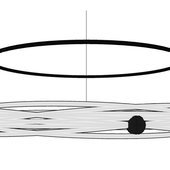I'm trying to figure out the best way to implement a neural network with a varying number of inputs. Because of an NDA, I can't post my specific issue or include my data, but I've come up with a scenario that is pretty close to my dilemma, though it is over simplified quite a bit. I'm just looking for a high-level suggestion of a possible way forward so hopefully it will be enough.
Say I'm tasked with writing a neural network to automate evaluating employees in a manufacturing job. There's a set number of inputs for each employee such as: days called out, times late, hours of OT worked and so on. In additional to this data there's also the information about the items produced which will be the same for each item: time taken to complete the item, amount of extra materials used to make item, quality of the item, number of tweaks needed before the item can be shipped and stuff like that. The number of data inputs for each item is always the same. The issue is that each employee produces a different number of items and I'm not sure how to account for that in the neural network.
So what I'm looking at for input data:
- employee data with an equal number of inputs
- item data with an equal number of inputs
- varying amounts of items which need to be associated with each employee
The output I need is a score that takes into account all the employee data and all the item data for the items that employee produced.
I was looking at averaging the item 'scores' for all the items an employee makes, but this didn't work since each item has to be part of the employee's data. This is because each item could have certain criteria that needs to weigh heavier in the evaluation (say an item is made with all criteria being excellent or all criteria being exceptionally poor) so each item needs to be considered individually along side the employee's other numbers.
Next I was thinking of was to create a static number of items for all employees and set all the inputs without an associated item to zero. This didn't work since the higher numbered item input weights got rated down since they weren't used on most employees and even items that were should have swayed the output wound up barely registering for the employee.
I'm new to neural networking but my neural network does seem to be working, it's just not giving me the relevant output I was hoping for without being able to include the item data. I started looking into recurrent neural networks, but the more I read about them the less they seem to be something that would help in my situation. Is this something that wouldn't be a good application for a neural network because of the different amounts of item data? Is there some other method of implementing neural networks that would be better suited to my data?
Edit: my current implementation is actually 2 neural networks. 1 for the data items to produce an item score and 1 for the employee data using output from the first as an input. To back propagate I'm just passing the MSE from the Employee neural network to the output of the Item neural network and then back propagating from there.
Edited to make title clearer.






